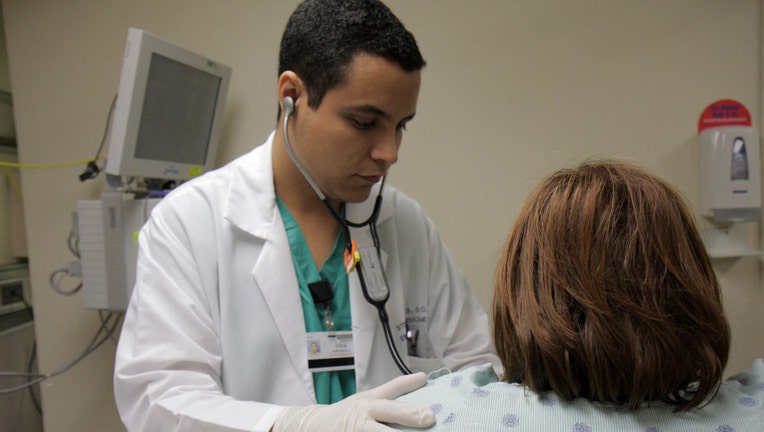1 in 4 adults thinks they have undiagnosed ADHD, survey finds

FILE-A doctor examines a patient in a hospital room. (Photo by: Jeff Greenberg/Universal Images Group via Getty Images)
Attention-deficit/hyperactivity disorder known as ADHD is considered by some as a childhood condition, but it may be more common in adults based on findings from a university survey.
The Ohio State University Wexner Medical Center and College of Medicine reports that 25% of adults polled in the survey believe they may have undiagnosed ADHD, noting that just 13% of respondents have shared their concerns with their doctor.
RELATED: ADHD diagnosed in about 1 in 9 US children, CDC says
Younger adults are more likely to believe they have undiagnosed ADHD than older generations, and they are also more likely to do something about it, per the survey.
Additionally, roughly 4.4% of people ages 18 to 44 have ADHD, and some people aren’t diagnosed until they’re older, Justin Barterian, PhD, a clinical assistant professor in Ohio State’s Department of Psychiatry and Behavioral Health, explained in the school’s study.
RELATED: ADHD medication recalled because bottles may contain different drug that has opposite effect
Approximately 1,000 adults were polled for the survey, which was commissioned by the Ohio State University Wexner Medical Center and College of Medicine.
What is ADHD?
Attention-deficit/hyperactivity disorder (ADHD) is a developmental disorder marked by persistent symptoms of inattention and/or hyperactivity and impulsivity that interfere with functioning or development, according to the National Institute of Mental Health.
Symptoms begin in childhood and can affect daily life, including social relationships and school or work performance. ADHD is well-known among children and teens, but many adults also have the disorder.
Additionally, ADHD symptoms can change as a person ages. The National Institute of Mental Health explains on its website that In young children, hyperactivity and impulsivity are the most common symptoms. And in elementary school, inattention may become more prominent, leading children to struggle academically.
Meanwhile, in adolescence, hyperactivity often diminishes, and symptoms are more likely to include restlessness or fidgeting. Teens with ADHD struggle with relationships and have a greater tendency to engage in risky behaviors, like substance use or unsafe sexual activity.
What is adult ADHD?
Adults struggling with ADHD will have problems with paying attention, hyperactivity and impulsivity that are severe enough to cause ongoing challenges at school, work, and home. The Ohio State University survey noted that these symptoms are persistent and disruptive and can often be traced back to childhood.
Adult ADHD occurs in adults who were diagnosed as children, but symptoms continue into adulthood.
It also happens with adults who are diagnosed for the first time, despite experiencing symptoms since they were younger that had been ignored or misdiagnosed.
How is ADHD diagnosed?
The National Institute of Mental Health says based on certain symptoms a person can be diagnosed with one of three types of ADHD:
- Inattentive: These symptoms center on inattention but not hyperactivity or impulsivity.
- Hyperactive-impulsive: Symptoms of hyperactivity and/or impulsivity but not inattention.
- Combined: Symptoms of both inattention and hyperactivity and/or impulsivity.
ADHD symptoms must begin in childhood (before age 12). Symptoms can appear as early as preschool and often continue into the teen years and adulthood. The criterion for a diagnosis differs slightly based on age.

